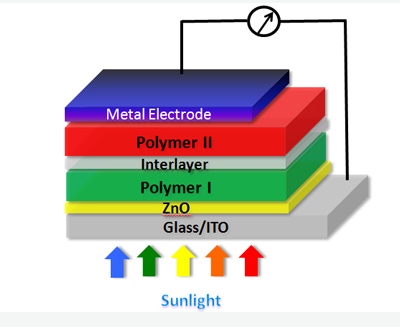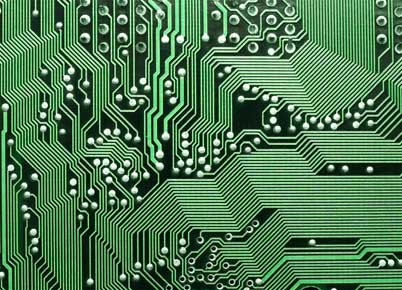Introduction:
Organic polymers are normally insulators, it can be presumed that conducting polymers must have an unusual structure. Polymers with conjugated π-electron (i. e. system have C=C conjugated bonds) backbones display unusual electronic properties such as low energy optical transition, low ionization potentials, and high electron affinities.

The result is a class of polymers that can be oxidized or reduced more easily and more reversibly than conventional polymers. The effect of this oxidation or reduction on polymer is called doping, i. e. convert an insulating polymer to conducting one.
Conducting polymers (CPs) such as polypyrrole, polythiophene and polyanilines are complex dynamic structures that captivate the imagination of those involved in intelligent materials research.
Applications of conducting polymers:
1. Conducting polymers are useful in discharging large quantities of static electricity in computer industries and in chemical industries. This can be accomplished by coating the conducting polymer over an insulating surface. Hence conducting polymers are used as antistatics.
2. Polymer rechargeable batteries:
Repeated oxidation and reduction of polymeric back bone constitutes the principle of polymer rechargeable batteries. For example, in poly pyrrole lithium cell is useful rechargeable battery compared to conventional Ni-Cd cell. So, these are environmentally safe and non toxic.
3.Polymer solar cell:
Polymer solar cells have attracted broad research interest because of their advantageous solution processing capability and formation of low-cost, flexible, and large area electronic devices.

However, the efficiency of polymer solar cells is still low compared to that of inorganic solar cells. Therefore, it is a challenge to find a polymer that has all the required properties for high efficiency devices, such as strong and broad absorption, high carrier mobility, and appropriate energy levels.
One possible solution to avoid the strict material requirements is to stack two or more devices with different spectral responses, which enables more efficient utilization of solar energy.
4.Chemical sensors:
Conducting polymers, such as polypyrrole (PPy), polyaniline (Pani), polythiophene (PTh) and their derivatives, have been used as the active layers of gas sensors.
There are two main types of applications for the Conducting organic polymers in electronics:
first one is that a polymer can be used as a material for constructing different devices and as discriminating layers in electronic chemical sensors.
In both cases, interacting with surrounding gases is vital. It can possibly determine the performance of the devices that are depending on conducting polymers, while it is helpful and supportive in chemical sensors.
Electronic Chemical Sensors for gases are thought of to be at the top of gaining the information related to the environment that we live in. The quality of the air that we breathe in our bodies is very important Issue and is a real concern of modern society.

5. Chemiresistors:
The most widespread group of sensors is those that use Conducting Polymers. They are cheaply and quite easily made-up. In addition they utilize of the main property of Conducting Polymers (their conductivity).
At its basic, a Chemiresistor is simply formed by two electrodes as contact points with the conducting polymer (CP) put onto an insulate substrate. When applying a constant current, the probable difference occurs on the electrodes represents the response output signal.

6.Field-Effect Transistor (FET) Sensors:
The interaction among the neutral gases and organic semi- conductors has been utilized as the principle of transduction in Field-Effect Transistor (FET) sensors, while it has been almost uncared for within non-sensing applications. The category of sensors that are based on work function modulation contains three kinds of Micro Fabricated Devices which are; “Chemically sensitive Diodes, chemically sensitive capacitors, and chemically sensitive FET’s (CHEMFETs) ”

7.Corrosion Inhibitors:
Conducting polymers of various forms will be electrodeposited onto oxidisable metals and electrochemical and environmental means will be used to access their applicably for corrosion protection. Polyaniline (Pani) and its derivatives are among the most frequently studied CPs used for corrosion protection. In addition, the use of PANI for corrosion protection of metals has been of wide interest as electro active coatings of the Pani could provide adequate protection against corrosion of stainless steels and iron sheets, respectively.
8.Artificial Intelligent Materials:
These are also called as smart materials. The interesting aspects of these materials is that they can remember configuration and can confirm when exactly same stimulus is given. This property can be utilized in generating pass words where high security is required.
9.Printed Circuit Boards:
Printed circuit boards are used in electrical and electronic instruments. They contain copper coated epoxy resins which are expensive and have less adhesive nature. But polymer sheets coated with conducting polymers are inexpensive and have better adhesive properties.

